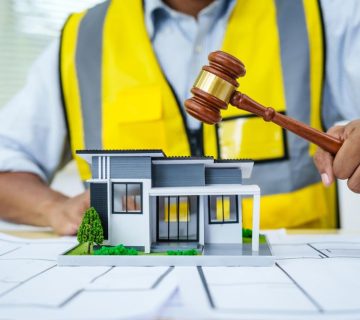Compliance with building codes isn’t just a legal requirement—it’s the foundation of safety, quality, and long-term property value. In California, where construction standards are among the most stringent in the country, failure to comply can expose developers, contractors, and property owners to costly penalties, lawsuits, and even criminal liability.
At Stryker Slev Law Group, a premier construction defect and commercial real estate law firm based in San Diego and serving clients throughout Southern California, we’ve handled some of the region’s most complex building code disputes. We’ll break down what building code compliance means, why it matters, and how to ensure your project stays on solid legal ground.
Understanding California Building Code Compliance
Building codes in California are not optional—they are legally enforced standards designed to safeguard public health, safety, and welfare. These codes regulate everything from structural integrity and fire safety to energy efficiency and accessibility.
Some of the key governing codes include:
- California Building Code (CBC)
- California Residential Code (CRC)
- California Electrical, Plumbing, and Mechanical Codes
- Title 24 Energy Standards
- Local amendments by counties and cities (e.g., San Diego or Los Angeles-specific codes)
Every city or county may adopt stricter codes than the state baseline, making localized legal knowledge essential.
Why Building Code Compliance Matters
Ignoring or misunderstanding these codes can result in:
- Stop-work orders and costly project delays
- Revocation of building permits
- Increased liability in the event of construction defects
- Insurance coverage disputes
- Potential lawsuits from tenants, buyers, or municipalities
More importantly, noncompliance can lead to safety hazards that jeopardize lives and property values. In commercial real estate developments, code violations can impact leasing, tenant occupancy, and future sale prospects.
Key Steps to Ensure Building Code Compliance
1. Start with the Right Team
One of the most common reasons for code violations is lack of communication between design professionals, contractors, and legal advisors. Ensure your project has:
- A licensed architect and structural engineer who understand local code requirements
- A reputable general contractor with strong compliance history
- Legal counsel experienced in California construction law and permitting
At Stryker Slev Law Group, we often advise clients before ground is even broken—ensuring contracts, scopes of work, and risk allocations are clear from the start.
2. Know Your Jurisdiction’s Requirements
California has a centralized code, but local jurisdictions can impose additional layers. For example:
- San Diego may require stricter coastal setback regulations
- Los Angeles might mandate enhanced seismic design standards
- Southern California fire zones may trigger specialized materials and egress codes
Failing to understand local amendments can derail even the best-intentioned projects. Engage with city or county building departments early and often.
3. Secure Proper Permits and Inspections
You cannot ensure code compliance without the proper permits. Equally important are scheduled inspections, which must occur at various project milestones—such as foundation, framing, and final walkthroughs.
Key tips:
- Never skip or delay inspections to save time
- Always follow up on correction notices immediately
- Maintain detailed records of all permits, revisions, and inspections
4. Use Updated Plans and Materials
Using outdated blueprints or substituting cheaper materials without approval is a fast track to violations. Ensure:
- All subcontractors have the latest approved plans
- Any design changes are reviewed and approved through formal change orders
- Material substitutions meet or exceed the code-specified standards
If you’re unsure whether a change affects compliance, legal counsel should be consulted before proceeding.
5. Document Everything
In the event of a dispute or investigation, documentation is your best defense. Maintain:
- Contractual communications
- Inspection reports and photos
- Daily logs from the construction manager
- Material receipts and subcontractor records
We regularly represent clients in disputes where incomplete documentation leaves them vulnerable. Avoid that by building a robust paper trail from day one.
6. Resolve Disputes Early
If you suspect code violations from a subcontractor or design professional, address the issue immediately. Ignoring a small deviation can lead to large-scale defects down the line. Engage legal counsel to:
- Review contract obligations
- Issue notice of default if necessary
- Trigger indemnity or insurance provisions
- Negotiate resolution before litigation becomes necessary
Early intervention is almost always more cost-effective than post-construction litigation.
How We Can Help
At Stryker Slev Law Group, we don’t just resolve disputes—we help clients prevent them. With decades of experience in construction defect litigation and commercial real estate law across San Diego, Los Angeles, and Southern California, we are uniquely equipped to guide you through building code compliance at every stage of your project.
Whether you’re drafting your first construction contract, navigating a high-value development, or facing allegations of noncompliance, our firm brings a smart, strategic approach that sets us apart. We’re not just lawyers—we’re problem-solvers who understand the construction world from the ground up.
If you’re looking to protect your investment and avoid the costly risks of building code violations, contact us today. Smart legal strategy starts before the first shovel hits the dirt.



